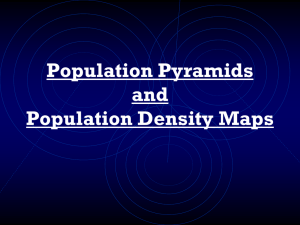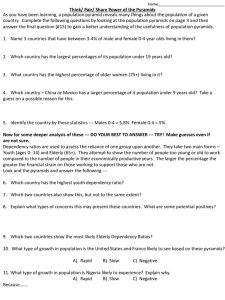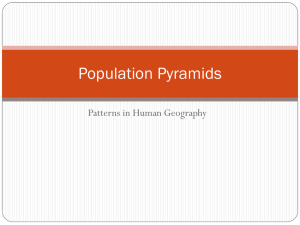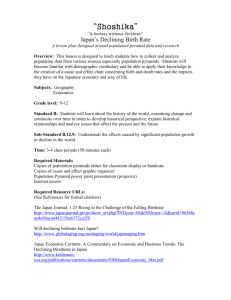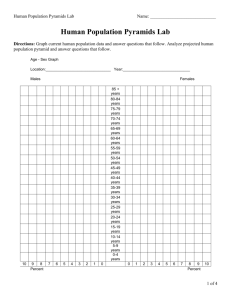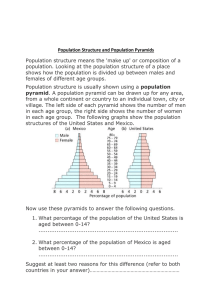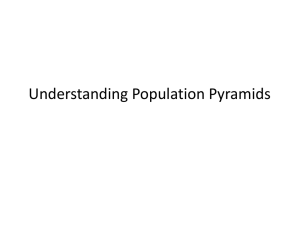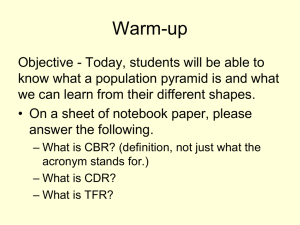Population Pyramids Presentation
advertisement
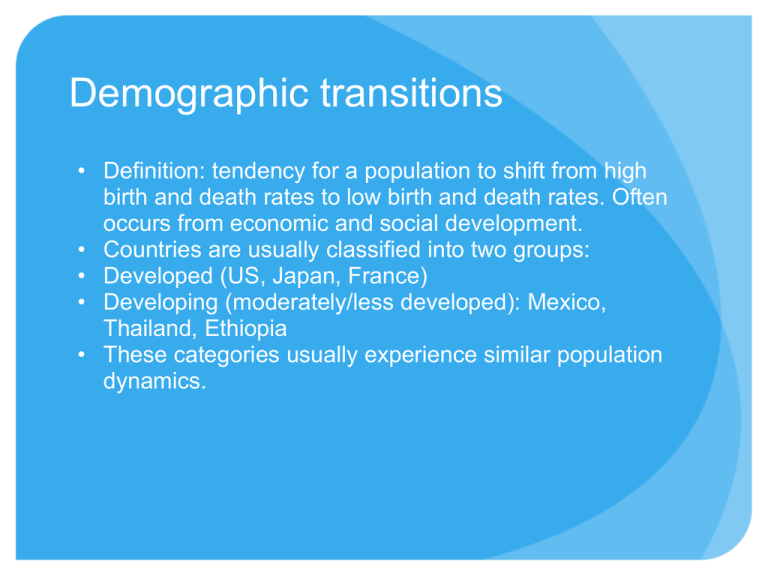
Demographic transitions • Definition: tendency for a population to shift from high birth and death rates to low birth and death rates. Often occurs from economic and social development. • Countries are usually classified into two groups: • Developed (US, Japan, France) • Developing (moderately/less developed): Mexico, Thailand, Ethiopia • These categories usually experience similar population dynamics. Population Paradox: Key terms • Total Fertility Rate: Average number of children born to each woman • Replacement level fertility: Number of children a couple must produce in order to “replace” themselves • RLF ranges (2.1-2.7) depending on the country. Why? • Infant mortality rates: number of infant deaths per 1,000 live births Population Profiles -bar graph showing the number or proportion of people at each age for a given population. Age structure • Population profiles shows the age structure of a population, which is the distribution of population by age • These profiles help demographers project how populations will change over time. • shows the age and gender composition of a region • horizontal axis: divides gender and shows absolute number of people or in percentage of population o male: left-hand female: right-hand • vertical axis: age in 5-year or 10-year intervals China Population Pyramid in 2005 Population Pyramids and Demographic Stages • characteristics shapes of ‘pyramids’ o o o o wide base (true pyramid) wide middle (bulge), somewhat wider base urn- or bottle-shaped reversed pyramid • Pre-reproductive Age: 0-14 • Reproductive Age: 15-44 • Post-Reproductive Age: 45 and older Phase 1 (preindustrial stage) • high birth rates, high (at time erratic) death rates, low growth rates • stage for much of human history, traditional societies where people were susceptible to disease and family planning was nonexistent • practically no country today Phase 2 (transitional stage) • high birth rates, declining death rates, rising growth rates • improvements in sanitation (water) and medicine, lack of family planning • in developing countries such as Iraq, Nepal, etc. • Population Momentum: population will continue to grow for 50-60 years after reaching replacement fertitlity Phase 3 (industrial stage) • continued decline of death rates, declining birth rates, growth rates decline from high to lower levels • change in behavior: adaptation to lower death rate, in particular infant mortality rate • economic change: urbanization (incentive to have fewer children/ China), changes in women’s role, better healthcare Phase 4 (postindustrial stage) • Phase 4: low birth rates, low death rates, low growth rates o United States, Canada • Better education, more affluent, cultural attitude toward smaller families, better standard of living Overview of pyramids What happens after Phase 4? • Phase 5?: low birth rates, rising death rates, declining growth rates (if birth rates drop below death rates: negative growth rates) • Zero population growth: birth rates equal death rates and there is no growth. • Graying population: proportion of elderly is increasing o Western Europe, Japan, Italy, Spain Comparing 3 different growth pyramids
